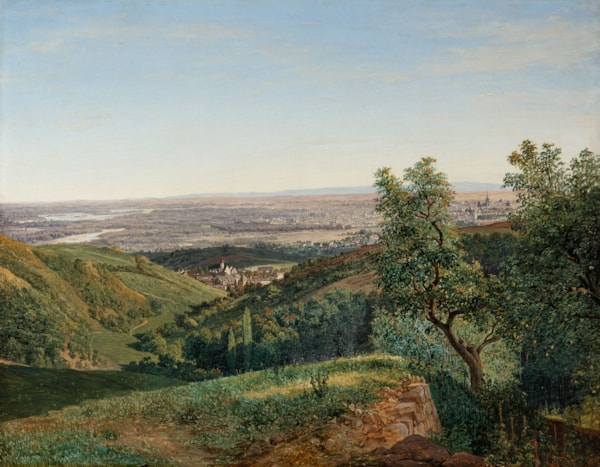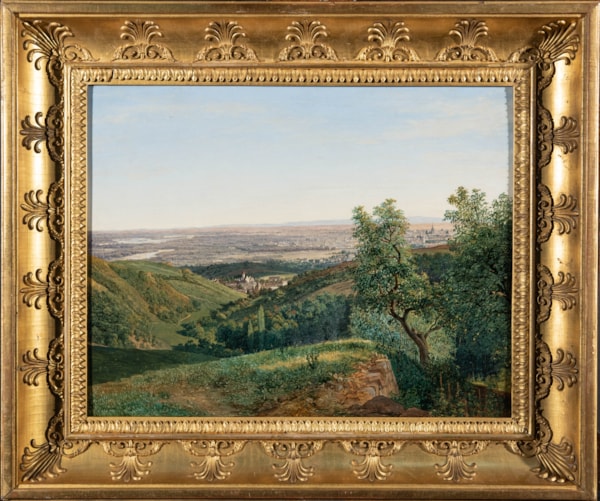Matthias Rudolf Toma (1792 - 1869)
Vienna, a view from the Krapfenwaldl
Oil on canvas
13.00 x 17.00 inches (33.02 x 43.18 cm)
Signed
1833
Provenance:
Hugo Marmorek and Felice Therese (née Monath), Shellinggasse 12/8, Vienna;
Their daughter, Helga Marietta Marmorek; By descent.
The warm embrace of a summer afternoon begins high above the Krapfenwaldl, a hill of 341 meters in the Vienna Woods. The name of the elevation comes from the 18th century war councilor Franz Joseph Krapf, who built a house in the forested lands. By 1806, the land was owned by Johann, Prince of Liechtenstein, who built his own summer house at the peak, and designed the area for locals to enjoy.
The son of a butcher, Matthias Rudolf Toma worked as an art dealer and lithographer in Schaffhausen between 1818-30, before returning to Vienna. An associate of Ferdinand Georg Waldmüller, Toma painted views of Lower Austria, Switzerland, and Savoy. Our painting is the prototype for several autograph versions, attesting to its popularity. An 1834 painting in the Belvedere includes two groups of figures in the foreground. Free of this allegorical distraction, the subject becomes a paean to nature and space.
In the foreground, welcoming our arrival, a sun-streaked carpet of grass and an ancient crumbling wall form the first of a series of interlocking triangles that guide our descent into the lush valley. A pair of cypresses, their tops crossed by angled sunshine, point towards the white buildings and red bell tower of the village church in the middle distance. The serpentine fruit trees at the right overlap the horizon and form a repoussoir. Through their branches one sees the spire of St. Stephen’s. Countless minute brushstrokes describe Vienna's other landmarks, the countryside, and the Danube, winding southwards in the mauve colored distance. An all-embracing sky completes the Edenic view.
Panoramic landscapes first appear in the background of Netherlandish Renaissance paintings by Joachim Patinir and the Alpine drawings of Pieter Brueghel the Elder. In the 19th century, the reverence for nature reached a peak in the works of Caspar David Friedrich and his followers in Dresden. Meanwhile, in the Roman Campagna, artists worked en plein air, sketching and painting ancient ruins.
Vienna, a view from the Krapfenwaldl is in excellent condition with a Classical ca. 1820/30 gilt frame. The harmony of urban and natural scenery, fresh colors, jewel-like details, and poetic charm make it a high point of Biedermeier landscape painting.
In 1869, Johann Strauss composed Im Krapfenwald’l, a polka that celebrated the site by including birdsongs. Today, the location has a thermal bath and swimming pool offering sweeping views of Vienna.








